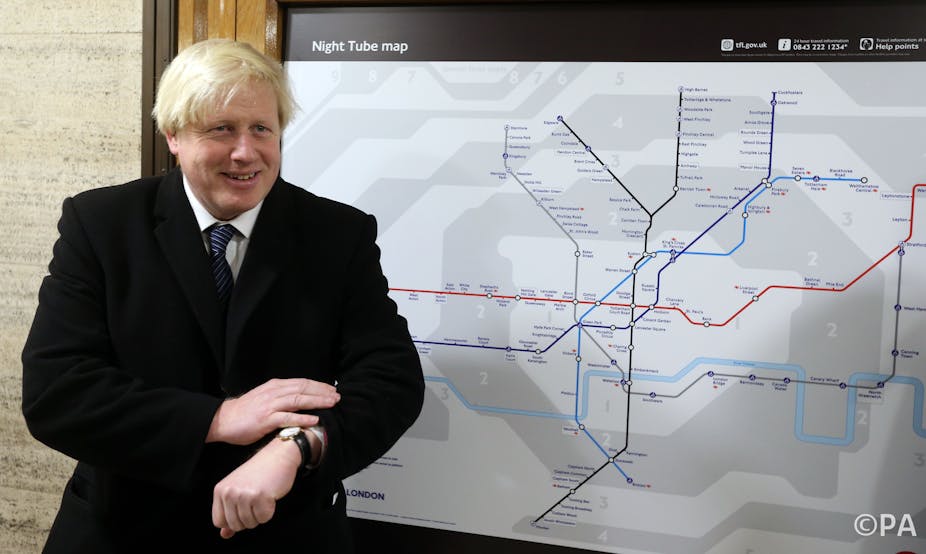London’s tube users face disruption in the New Year as the unions threaten strike action. Debate on the subject is as heated as ever, with both sides racing for the moral high ground. But, though London Mayor Boris Johnson relies on some dodgy evidence, it turns out the tube strikers’ case may not be as strong as they would have us believe either. Despite a one day strike on the Piccadilly line next week over untaken leave, the prospect of major action affecting the whole network in the run-up to Christmas looks very unlikely.
The dispute centres on the threat of 750 job losses as a result of London Underground’s plans to close up to 240 ticket offices. This is part of London Underground’s master plan to make part of the tube system a 24-hour operation at weekends, and to move to a contactless ticketing system.
Not surprisingly, the announced closures have attracted the condemnation of Bob Crow of the Rail, Maritime and Transport workers union (RMT) and Manuel Cortes of the Transport Salaried Staffs Association (TSSA). The move to 24-hour working will also result in a significant contractual change and the unions will seize the opportunity to leverage all they can in return for train and station staff working round the clock.
The RMT has taken the robust stance that we have come to expect: on Tuesday Bob Crow announced they would be balloting members on strikes or other actions such as a go-slow or overtime ban. The two unions are now set to launch a joint campaign against the ticket office closures.
Perfect timing
Unfortunately for Crow, the idea of a “night tube” caught the imagination of Londoners and rather distracted from the planned closures. The mayor and Mike Brown of London Underground also perfectly timed the announcement to ensure any strike does not happen before Christmas.
The statutory notifications required for industrial action ballots make rapid strikes difficult to plan. The union must give no less than seven days’ notice to the employer of its intention to hold a ballot; the ballot must be “fully postal”, which adds another two weeks; if the vote is in favour of industrial action, the union must give the employer no less than seven days’ notice of the start of the action.
The first day of action must take place within 28 days of the vote otherwise, unless the employer agrees to an extension, a new ballot is required. So while tube users can look forward to industrial action in January, they have at least been spared it at Christmas.
Struck out
Boris’ case against tube action is extremely weak, and based on flimsy research. Earlier this year, Conservatives in London’s local government commissioned a survey into industrial action on the tube. The “Struck Out” report contains three recommendations for curbing strike action by tube workers: to ban strikes entirely; replace the right to strike with “binding pendulum arbitration”, where an independent judge or panel sides with one party or the other; or to require a majority to vote in favour of arbitration for it to happen.
Frankly, the report is amateurish and no doubt cost far more than it is worth. There is no “right to strike” in English law, this is a myth. The poll comprised just 285 Londoners, not exactly a representative sample, and the survey questions were extremely leading. Take this, for example:
To what extent do you agree or disagree with the following statement: ‘it is currently too easy for London’s tube workers to strike’
The truth is that statutory balloting requirements make lawful industrial action difficult. For evidence of this, see the numerous cases in the last few years where employees of Johnston Press, British Airways (twice), Metrobus, and Network Rail among others were prevented from striking due to technical errors in balloting. It’s a lot harder to take industrial action than most people realise.
The report claims that an average strike on the tube costs London’s economy at least £48m per day. This estimated figure is based upon a survey in 2007 of 315 businesses on behalf of the London Chamber of Commerce and Industry. For decades it has been argued that employers overstate the economic impact of industrial action and this report has that ring to it. Research based on a small sample of biased respondents speaking six years ago is not the most rigorous way to assess costs.
Where’s the mandate?
Low turnout in strike ballots is the biggest problem for most unions and this plays into the hands of employers and the political right. Boris and the London government may have their sums wrong on the economic impact of striking, but here they have a point. Ultimately, minimum turnouts for ballots will become a legal requirement. The CBI has called for a minimum of 40% and Boris wants 50%.
Trade unions often overstate support for industrial action and headlines such as “78% in favour of strike action” tend to be misleading as they refer only to those already voting. In the autumn of 2011 most ballots saw fewer than half of union members voting. The Border Agency strike, which threatened to disrupt the 2012 Olympics, was called by the PCS union after a turnout of only 20%. The same union threatened a strike in March this year on a turnout of 28%. This is no mandate for industrial action in anyone’s book. According to the London government report, in recent years tube strikes have gone ahead on an average turnout of 39%.
These continued arguments over economic impact and turnout mean industrial action in the New Year looks increasingly likely. The chances of the two sides reaching an agreement are receding – time to brush the dust off those walking boots.

